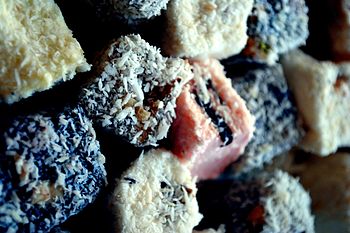 |
| Composting - Photo: Wikimedia |
There are several organic materials that should not be included in the compost pile unless you know how to do it properly while there are other materials that should not even be attempted even by the experts. To compost or not to compost, that is indeed the question. And let’s see if we can provide the answers.
For home composters like you and me, we have a number of materials available inside our own home and even our own backyard. The big, industrial composters have a little advantage over us. They can compost more materials than us because they have the facilities to divert, mask, or absorb the odor that may come out from composting a lot of organic stuff. We don’t have the same luxury. We don’t want our neighbors organizing a protest rally against our composting in our own backyard, now do we?
Don’t let this worry you though, there are still a lot of materials that we could include in our compost pile. Let’s begin with something our front lawn is always dying to dispose of excess grass. Yep, grass clippings from our lawn can be put to better use like for the compost file in our backyard. In situations where you have hay instead of grass clippings, that could work as well.
Using hay for composting is often practiced by farmers. You will find that farmers are more than willing to dispose of that hay. And when it comes to using hay for composting, be sure to pick the greener ones. Green hay means it still has a lot of nitrogen in it.
Others include kitchen wastes such as vegetable peels, fruit rinds, tea bags, eggshells and coffee grounds. These substances contain high levels of nitrogen. Make sure, however, to keep pests away from your kitchen wastes. Some would prefer to prepare a compost bin intended for their kitchen wastes. Others would prefer burying these wastes in eight inches of soil. And because they precisely attract pests, it would be best to stay avoid including scraps of meat, milk products, and leftover bones.
Wood chips, wood shaving, sawdust, paper, and other wood products are generally good to include in your compost pile. However, be sure to stay away from chemically-treated wood products. Arsenic is one of the highly toxic chemicals that is sometimes used to treat wood. Using sawdust from such treated wood products is a no-no since the chemical will leak into the soil causing more harm than good.
Speaking of no-nos, there are other things that you should not include in your compost. Plants that died due to a disease should not be included. There is still a possibility that the disease the caused the death of the plants might infect your future plants.
And similarly, human, dog and cat wastes are not used as composting materials as well precisely because they contain organisms that could cause disease. Such disease might cause people to be sick or might affect your plants.
Even though grasses can be used for composting, it would be best to avoid weeds like morning glory, ivy, sheep, and kinds of grasses that could grow in your compost pile. The weeds seeds also can survive the composting pile which can be carried to your new garden.
So going back to our earlier question: to compost or not to compost? Composting is something that is ideal for your garden. However, choosing the right materials will determine how successful your compost pile will be.






